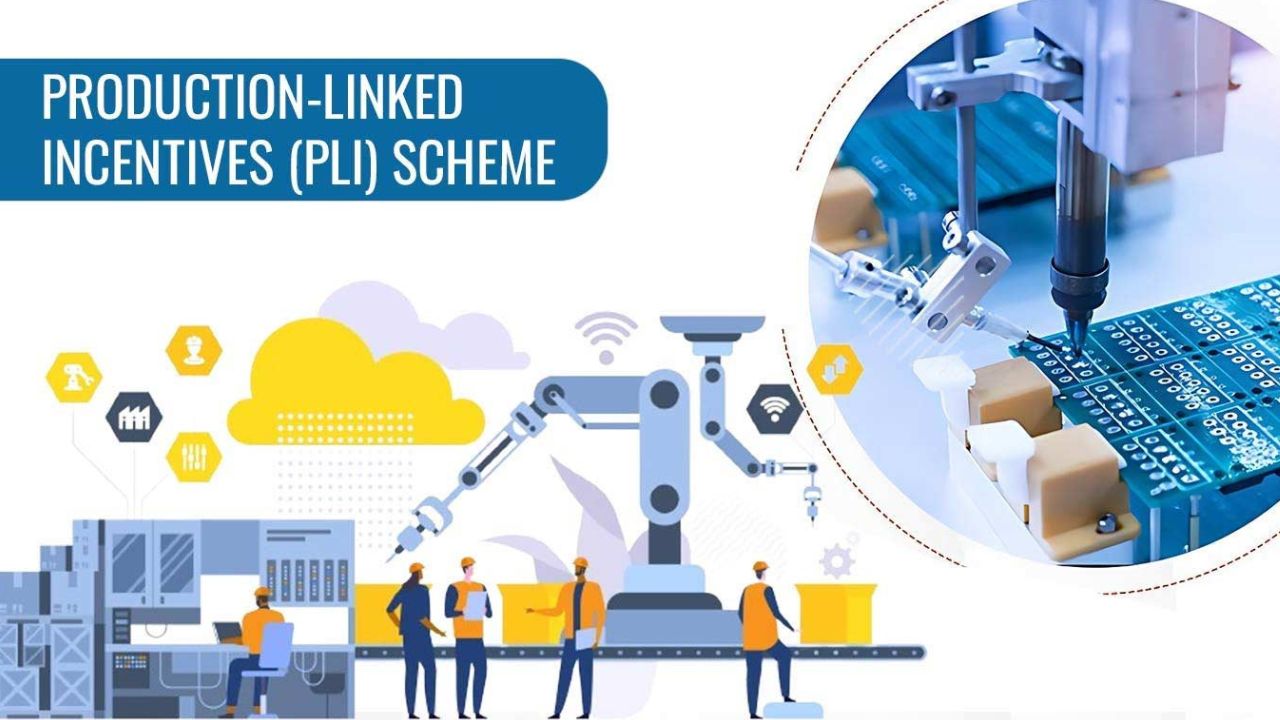For years, the “Make in India” initiative has worked to improve the business environment and attract investment. However, to compete with global manufacturing powerhouses and attract large-scale investment in strategic sectors, a more direct and powerful incentive was needed.
The Government of India’s answer to this challenge is the Production Linked Incentive (PLI) Scheme. Launched initially in 2020 and rapidly expanded since, the PLI scheme is a game-changing policy instrument. It represents a strategic shift from general incentives to direct, performance-based rewards, aiming to boost domestic manufacturing, reduce dependence on imports, and create large-scale employment.
What is the PLI Scheme? The Core Concept
- Full Name: Production Linked Incentive (PLI) Scheme
- Launched: First introduced for mobile manufacturing in April 2020 and subsequently expanded to over 14 sectors.
- The Goal: To make Indian manufacturers globally competitive, attract significant investment in key sectors, encourage the adoption of modern technology, and firmly integrate India into the global supply chain.
The Core Mechanism
The genius of the PLI scheme lies in its simplicity and its direct link to performance. The government provides a financial incentive or subsidy to eligible companies. This incentive is not given for setting up a factory or for making an investment. Instead, it is directly linked to the incremental sales of products manufactured within India, calculated over a base year. In simple terms: the more you produce and sell from India, the more incentive you receive from the government.
How Does it Work? Key Features
Targeted Strategic Sectors
The PLI scheme is not a broad-based program; it is a highly targeted one, focusing on sectors that are crucial for India’s economic growth and self-reliance. Some of the key sectors covered under the scheme include:
- Mobile Phones and Electronics Components
- Pharmaceuticals (APIs and Medical Devices)
- Automobiles and Auto Components
- Large-Scale Electronics Manufacturing
- Solar PV Modules
- Advanced Chemistry Cell (ACC) Battery
- Textiles and Food Products
- Drones and Drone Components
A Performance-Based Incentive
This is a purely performance-based scheme that rewards output, not just intent. This structure ensures that public funds are used efficiently to generate tangible increases in manufacturing and sales, leading to economic growth and job creation.
Focus on Creating “Champions”
The scheme is designed to attract large-scale investments from both global and domestic “champion” companies. The idea is that these large anchor companies will not only manufacture at scale themselves but will also create a robust ecosystem of smaller Indian suppliers (MSMEs) around them, boosting the entire value chain.
The Human Touch: Building a Manufacturing Ecosystem
Consider the story of India’s mobile phone industry. Just a few years ago, India was a massive consumer of smartphones but manufactured very few of them.
When the PLI scheme for electronics was announced, it sent a powerful signal to global manufacturers. A major international company, which was considering setting up a new factory in either Vietnam or India, saw the clear financial advantage offered by the PLI scheme. The promise of a direct 4-6% incentive on every additional phone manufactured and sold from India tilted the decision.
The company invested thousands of crores to build a state-of-the-art factory in a town in Southern India. But the story didn’t stop there. To supply this mega-factory, dozens of smaller Indian businesses started manufacturing components locally—chargers, cables, plastic casings, and packaging boxes.
The result was a massive ripple effect. The main factory created over 20,000 direct jobs, but the surrounding ecosystem of Indian MSMEs created an additional 50,000 jobs. The PLI scheme didn’t just help build one factory; it helped create an entire manufacturing ecosystem, turning India into a global hub for mobile phone production.
Impact and The Road Ahead
Impact
- Significant Investment: The scheme has already attracted massive investment commitments from companies across the various targeted sectors.
- Surge in Production: Sectors like mobile manufacturing have seen a phenomenal surge in domestic production, leading to a sharp decline in imports.
- Job Creation: The scheme is on track to create lakhs of new direct and indirect jobs over the next five years.
Challenges
- MSME Integration: A key challenge is ensuring that the benefits of the scheme flow down effectively from the large anchor companies to the smaller MSMEs in their supply chains.
- Sustaining Competitiveness: The ultimate goal is for these industries to become globally competitive on their own merit, even after the 4-6 year incentive period is over.
- Administrative Efficiency: Ensuring the smooth and timely calculation and disbursal of incentives to the companies is a complex administrative task that requires high efficiency.
Conclusion
The Production Linked Incentive (PLI) Scheme is a bold and targeted industrial policy that is at the heart of the ‘Make in India’ and ‘AtmaNirbhar Bharat’ (Self-Reliant India) missions. It marks a significant evolution in India’s approach to industrial development, moving away from broad subsidies to specific, performance-based rewards. By providing a clear and compelling reason for companies to manufacture at scale in India, the PLI scheme is playing a pivotal role in strengthening domestic supply chains, creating jobs, and firmly establishing India as a trusted and competitive hub in the global economy.
